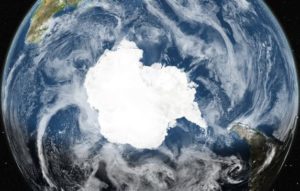by Fritz Vahrenholt, July 7, 2020 in NoTricksZone
First, the global mean temperature of satellite based measurements was surprisingly much higher in May 2020 than in April. In contrast, the global temperatures of the series of measurements on land and sea decreased. The difference can be explained by the fact that under warm El-Nino conditions the satellite measurements lag about 2-3 months behind the earth-based measurements.
From November 2019 to March 2020 a moderate El-Nino was observed, which has now been replaced by neutral conditions in the Pacific. Therefore, it is to be expected that also the satellite based measurements, which we use at this point, will show a decrease in temperatures within 2-3 months.
The average temperature increase since 1981 remained unchanged at 0.14 degrees Celsius per decade. The sunspot number of 0.2 corresponded to the expectations of the solar minimum.
The earth is greening
…

